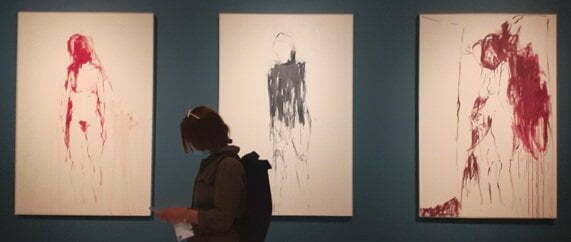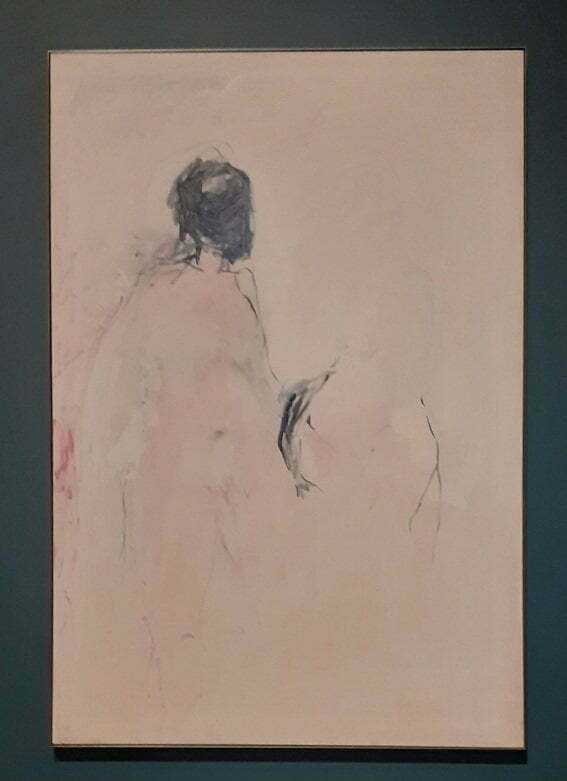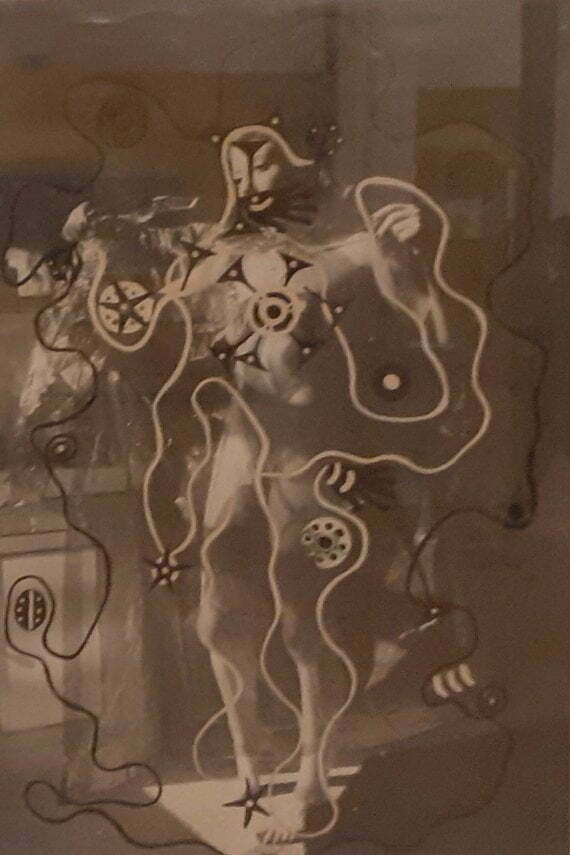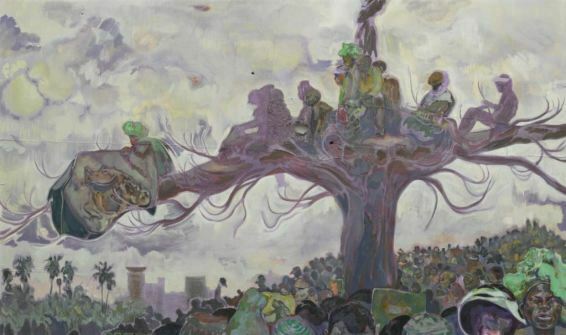
It’s a mad world out there. For too long there has been no escape into galleries, those places where disorder should dissolve and the eye focus on things that make sense. Elusively at times, but sense nonetheless. Now, in Britain at least, and for the time being at least, Covid-19 restrictions are retreating, letting galleries and museums re-open to try and do what they are there to do. Try is the operative word, though. Galleries are still a part of that disordered world, in the obligations they must continue to place on us – wearing of masks, control of numbers attending – which must distort what they show. Nor are their shows a reflection of the present world, but of some other world with its issues, the one we we now refer to as normal, which the art should there to resolve. The galleries provide reminders, not answers. For the time being.
But I want to go, and have been fortunate to see four fine exhibitions in London just recently, with more lined up. All are still running, all had things to say about that other world that we have not quite re-joined as yet. All I can strongly recommend.
John Akomfrah: The Unintended Beauty of Disaster

John Akomfrah is the most unbounded of artists. He is – I think – a filmmaker first, but ranges across the media to express his understanding of the world of today as shaped by its past. I treasure his use of archive film to speak with newfound eloquence. His show at the Lisson Gallery is a combination of film installations and photo-texts on colour and race. The latter, owing to my muddle-headedness (I left by the wrong door), I missed, so I must return, but I was there chiefly for his triptych 2019 film, Four Nocturnes. If you have seen Akomfrah’s work, you’ll know what to expect – awe-inspiring images, arresting use of monochrome archive (still and moving), figures caught in landscapes, elements of mystery woven into the construction that words alone cannot express.
It was shown in a darkened room with three screens and few seats, so those inside mostly stood or sat on the floor against the back wall, uneasy about how close we should be to one another. The ‘film’, which runs for about an hour, is a very Akomfrah-ish vision of the beauty and destruction of the natural world, with dazzling images of waterfalls, deserts, mountains, seas interwoven with photographs (often overlaid by water) of colonial brutalities in the Congo, newsreels of African leaders, recurring shots of divers leaping into a giant hole in the ground, and elephants, all linked by seven ‘migrants’ sadly tramping from no place to no place. It was divided into four parts – earth, air, fire, water (Akomfrah likes his classical allusions) – and was dazzling and beautiful and just a little bit portentous. Where do you go after this, I thought, now that you have given us so all-encompassing a view of our world? Maybe he will be the first video artist in space.
John Akomfrah: The Unintended Beauty of Disaster is running at the Lisson Gallery until 31 July 2021
Tracey Emin / Edvard Munch: The Loneliness of the Soul

I had booked tickets for the Tracey Emin / Edvard Munch show at the Royal Academy last year, only for it to be cancelled as a new lockdown was imposed. Happily, we ticket-buyers were placed at the front of the queue for when the show finally opened in May 2021. The RA has form with this sorts of mash-up shows, in which an artist of today is seen alongside the works of a master – back in 2019 I enjoyed the show where they brought together Michelangelo and video artist Bill Viola, my view on the contest being that Viola was the victor.
For this fresh bout, the modern artist triumphed once again. Though it may have helped that Emin herself curated the exhibition (quite brilliantly), it became all too obvious to the viewer that Munch’s depictions of angst were show, Emin’s the real thing. Hers were the naked depictions, in every sense. In other contexts (I have seen his work in Norway, where the light is his) Munch rings so true; here he was exposed. Emin speaks highly of his art and its influence on hers, yet the exhibition felt like a critique of his limited view, her art having the honesty that his evaded, or could never quite understand. One work of Emin’s in particular, ‘You Came’ (2018), positioned towards the end of the exhibition space, had an extraordinary harmony about it, where she finds resolution at last (the work it reminded me of was not Munch but Rembrandt’s ‘The Return of the Prodigal Son‘). Hers was the only conclusion possible.
Tracey Emin / Edvard Munch: The Loneliness of the Soul is running at the Royal Academy of Arts until 1 August 2021
Eileen Agar: Angel of Anarchy

I knew nothing of Eileen Agar (1899-1991) before encountering the exhibition of her work at the Whitechapel Gallery. There’s a special apprehension you must have in coming across the art and artist for whom you have had no previous exposure. You are little lost, uncertain of how to position the artist alongside what you know, or should know. You see, but how much do you see? Inevitably, you rely on those curating the show to introduce, explain, reassure, illuminate. The curators of this show did their best, though had they not placed over-wordy labels just four feet from the ground I might have been more grateful. As it was, a combination of scarcely-readable labels and talkative visitors made me find the experience unsettling (in the wrong way).
The art is itself was fine, if never quite reaching the heights. Arranged over two floors, it took you from prentice work in her homeland of Argentina, to adventures in surrealism in Britain and France, to collages – for me her most notable work, astutely blending the found with paint, to later periods where she clung to to surrealism to a point where she began to look out-of-date. None of it was poor, however, and every picture reflected such a love of the process of creating art. It was a record of someone who lived well because they could paint.
Eileen Agar: Angel of Anarchy is running at the Whitechapel Gallery until 29 August 2021
Michael Armitage: Paradise Edict

Back to the Royal Academy for another artist new to me, the Kenyan Michael Armitage. This was my the show of the summer. His paintings express past and present Africa, the attraction and repulsion of Western classical tropes, and a particular East African vision. You stared and stared at these multi-layered pieces, seeing more and more each time you returned to them. I marvelled at how the ideas must have formed and the overlain images suggested themselves as the painting developed. Two large-scale works stood out in particular: ‘Paradise Edict’, blending the exotic dream of African with violence and the surreal to extraordinary effect; and ‘The Fourth Estate’, an ostensibly documentary record of a scene from recent Kenyan elections that incorporated strange signifiers (such images of toads) that made you think of Renaissance paintings with their coded iconography understood only by those on the inside. The overall effect is like a coming together of TV news footage and The Magic Faraway Tree.
The canvases themselves were intriguing, being made from African bark cloth, with occasional holes (deliberate? or were they there from the start and he built the composition around them?). There were three rooms – two devoted to his works, a third to East African contemporaries, of whom I liked best the domestic vision of Sane Wadu and and the strange figures conjured up by Meek Gichugu, but Armitage was in a different league. He made that some other world very present after all.
An exhilarating show.
Michael Armitage: Paradise Edict is running at the Royal Academy until 19 September 2021